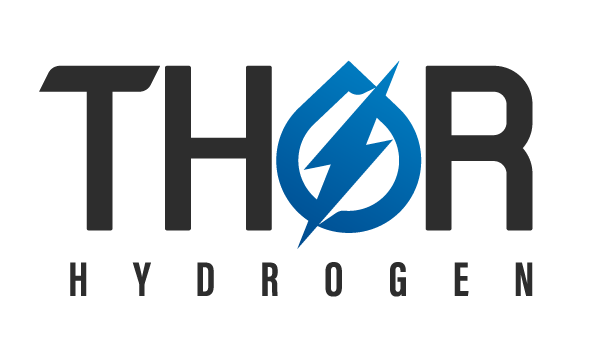What is ‘Net-Zero’?
The impact of greenhouse gas emissions on global temperature rise drives the imperative to decarbonize our global economy. In order to keep the rise in global mean temperatures well below 2 degrees Celsius above pre-industrial levels and to try to limit global warming to 1.5 C, the 2015 Paris Agreement, (and the IPCC in 2018) recommended a target of net-zero carbon emissions globally by mid-century. A Net-Zero approach to decarbonization calls for deep sectoral reductions in greenhouse gas emissions, with any residual GHG sources being offset by removing CO₂ from the atmosphere. The philosophy recognizes that although advances in zero-emission technology can ultimately take us very close to full elimination of emissions, a residual greenhouse gas burden will inevitably remain from ‘hard to abate’ sectors such as aviation, shipping and some industrial processes.
In many sectors of our economy, technologies exist that can reduce emissions to zero. In electricity generation, renewables such as wind, solar and geothermal emit zero carbon. Transportation that runs on electricity or hydrogen, energy-efficient homes and industrial processes based on electricity rather than gas can all aid in reducing carbon emissions to zero. In aspiring to a science-based net-zero trajectory, it is important that focus is on emissions reduction rather than offsetting - especially for areas in which emissions can be cost-effectively eliminated. Accordingly, a strict net-zero philosophy allows for greenhouse gas offsetting to be applied only in specific instances, using natural or technology-based sinks.
Beyond the natural carbon sinks (which absorb CO2) such as vegetation and oceans, additional removal of greenhouse gases in the atmosphere can be achieved by a combination of nature-based or natural climate solutions such as (re)afforestation, permaculture, and biosphere restoration [1] and by employing negative emissions technologies (NETs) such as carbon capture utilization & storage (CCUS) [2], direct air capture of carbon (DAC) [3]. NETs are critical to achieving net-zero, especially in the near and mid-term to account for anticipated slower progress in technology transformation for hard to abate sectors.
Getting to Net-Zero
The Net-Zero approach anticipates what can be achieved through broad societal changes and represents a major shift in the way that we produce, use and think about energy. Carbon emissions to the atmosphere can be reduced by eliminating the generation of electricity, heat and motive power by fossil fuels, replacing these with renewable low-carbon energy sources such as wind, solar, tidal and geothermal and combining these with hydrogen or battery power storage to resolve the intermittent nature of these energy sources. But beyond technology there must be a strong change in collective mindset.
The Committee on Climate Change [4], the UK’s independent advisory body on climate change and decarbonization, notes that “Over half of the emissions cuts required to reach net-zero require people to do things differently.” They note that the public must be fully engaged in the net-zero transition and consequently policy, and ‘low-carbon products’ should be designed around individual’s needs.
Net-zero is a vast challenge requiring sweeping changes that cut across the full spectrum of business and societal factors. Many of the existing and emerging technology solutions, such as green/blue hydrogen, intersect a range of systems within the economy - electricity generation, power storage, mobility, heavy industry and combined power & heat. For this reason, the challenge of decarbonizing our global economies to reach net-zero must be embedded in everything that we do.
Achieving a net-zero GHG target by or before 2050 at an acceptable cost also calls for well-designed and transparent policies that set the direction and pace of change. Canada’s roadmap towards meeting the national net-zero goal is addressed in the Pan-Canadian Framework on Clean Growth and more recent updates [5] and in the UK by various reports produced by The Committee on Climate Change [6].
References and Further Reading
[1] Nature Conservancy – Natural Climate Solutions https://www.nature.org/en-us/what-we-do/our-insights/perspectives/natural-climate-solutions/
[2] Global CCS Institute https://www.globalccsinstitute.com/
[3] Direct Air Capture of CO2 – Carbon Engineering https://carbonengineering.com/our-technology/
[4] The Committee on Climate Change - Net Zero – The UK’s contribution to stopping global warming https://www.theccc.org.uk/publication/net-zero-the-uks-contribution-to-stopping-global-warming/
[5] Canada’s Greenhouse gas and air pollutant emissions projections: 2019. https://www.canada.ca/en/environment-climate-change/services/climate-change/greenhouse-gas-emissions/projections/2019.html
[6] Reducing UK Emissions – 2019 Progress Report. https://www.theccc.org.uk/publication/reducing-uk-emissions-2019-progress-report-to-parliament/
[7] Carbon Trust article: Net Zero: An ambition in need of a definition - https://www.carbontrust.com/news-and-events/insights/net-zero-an-ambition-in-need-of-a-definition
